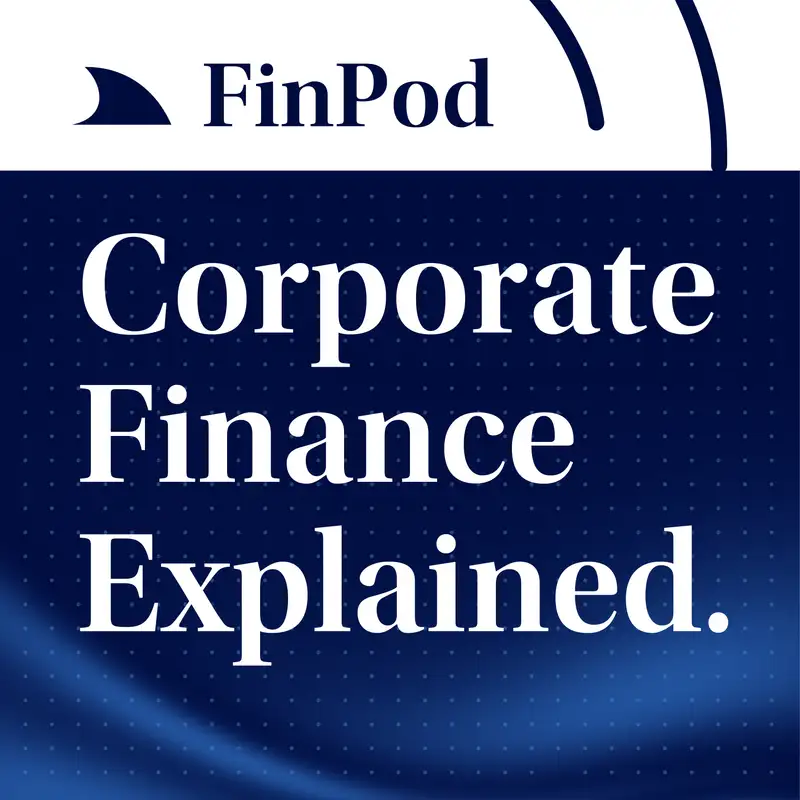Corporate Finance Explained | How Stock Market Indices Shape Valuations and Strategy
FinPod: The Hidden Power of Stock Indices: S&P 500, Dow, & Corporate Strategy
Everyone sees the headlines ("The S&P 500 is up"), but few understand the mechanics behind these indices and how they actively shape the global flow of trillions of dollars. Indices are not just scoreboards; they are the architecture of modern capital flow.
In this episode of Corporate Finance Explained on FinPod, we get under the hood of the S&P 500, the Dow Jones, and the NASDAQ to reveal how index inclusion dictates corporate strategy, CEO pay, and a company's fundamental access to capital.
This episode covers:
The Architecture of Major Indices
We break down the fundamental rules of construction that determine where trillions of dollars are invested:
Everyone sees the headlines ("The S&P 500 is up"), but few understand the mechanics behind these indices and how they actively shape the global flow of trillions of dollars. Indices are not just scoreboards; they are the architecture of modern capital flow.
In this episode of Corporate Finance Explained on FinPod, we get under the hood of the S&P 500, the Dow Jones, and the NASDAQ to reveal how index inclusion dictates corporate strategy, CEO pay, and a company's fundamental access to capital.
This episode covers:
The Architecture of Major Indices
We break down the fundamental rules of construction that determine where trillions of dollars are invested:
- S&P 500: Chosen by a committee based on meticulous criteria: large market cap, strong liquidity, stable earnings (positive in the last four quarters), and, crucially, a high public float (shares available for public trading).
- Dow Jones Industrial Average (DJIA): The symbolic relic, a small, subjectively chosen, and historically price-weighted index where share price (not market cap) dictates influence. Its changes are profound cultural signals (e.g., GE's removal).
- NASDAQ Composite: The tech engine is a market-cap-weighted index where size truly matters, meaning giants like Apple and Nvidia drive performance.
The Inclusion Effect: Billions in Motion
When a company is added to a major index, it triggers a mandatory wave of passive capital, instantly reshaping its financial profile:
When a company is added to a major index, it triggers a mandatory wave of passive capital, instantly reshaping its financial profile:
- Mandatory Demand: Index funds managing trillions are forced to buy the stock, regardless of valuation, creating an instant stock price surge (Tesla's chaotic 2020 entry).
- Structural Benefits: Inclusion boosts liquidity, provides huge prestige, and, most powerfully, results in a lower cost of capital for future growth and expansion.
- Historical Markers: Index removals are devastating public demotions, signaling fading relevance and structural distress (GE's removal after 110 years, Exxon Mobil being replaced by Salesforce).
Strategy & CEO Pay
The influence of indices extends directly into the C-suite, dictating day-to-day strategic focus:
The influence of indices extends directly into the C-suite, dictating day-to-day strategic focus:
- Executive Compensation: CEO and CFO bonuses are often tied to metrics like Total Shareholder Return (TSR) relative to the S&P 500, making index performance the benchmark for their paycheck.
- Gearing for Inclusion: Companies actively clean up their balance sheets, reduce leverage, and manage share structure (to increase public float) to please the index gatekeepers—a massive strategic finance initiative.
- IR's Crucial Role: Inclusion expands a company's visibility, forcing finance and investor relations (IR) teams to adopt a higher level of transparency and consistent messaging for a much broader, more demanding shareholder base.

